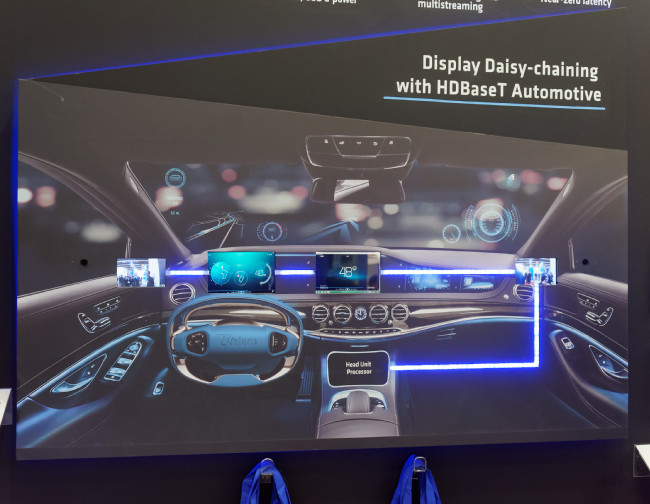HDBaseT and Valens were showing the HDBaseT interface being used for automotive applications. In this application simple UTP (or coax) cables can be used and simpler/cheaper cables can be installed in autos with a shorter cable distance than the A/V version. The interface can use the regular connectors that are already certified for auto use (an important factor) and also have the advantage that they fully support USB, which makes the interface very flexible. The support of USB means that special features such as Fast Charging can be supported. The group told us that with screened cables, fast charging can be challenge because of potential differences.

There was also a demonstration of how the interface can be used in a loop configuration, with both ends of the cable connected to a central console and with a multistream protocol. That means that if there is a fault, there is some element of redundancy, with signals getting to the break from both directions. In the multi-stream mode, the pixels for each display are, effectively, sent with the detail of which screen should show each pixel. For transmission, we were told that there is ‘no reason’ why light compression such as VESA’s DSC could not be used. DSC has the advantage in automotive is that it has been defined for data applications, so there are few issues with visual artefacts – a very important point for automotive brands. (DSC was being demonstrated by Hardent on the Cadence booth, but nothing was new compared to the demos at CES and MWC.)

